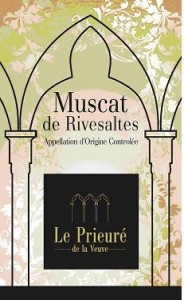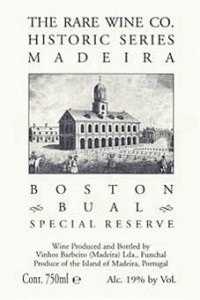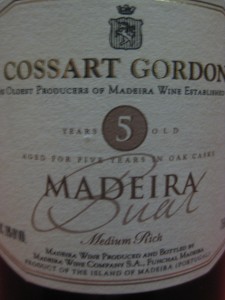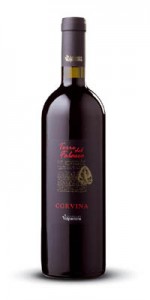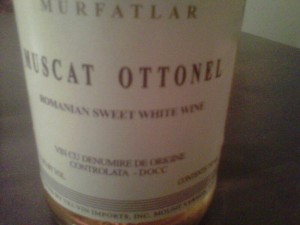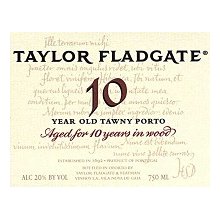 Old Time Memories
Old Time Memories
Old-time wine lovers always talk about “that bottle” – the one that they remember from the 1960s as the bottle that led them to their life’s passion in a blaze of enlightenment with archangels singing on high and fauns prancing around in circles. They discuss details of the night in intricate detail and have a far-away look in their eye like they’re remembering bygone eras or (more probably) have had one too many tipples.
October Blizzard of 2011
Still, there is something to the wine-memory nexus as no less an authority than Johns Hopkins reports. Forever etched into this wino’s memory is the October Blizzard of 2011. Hermano Timmy had just returned from his conquest of numerous Iberian beaches and brought with him one of the finest trophies available: Port. Taylor’s Tawny Port, to be specific.
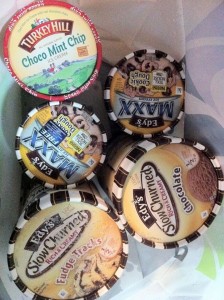 Annual Ice Cream Rite
Annual Ice Cream Rite
Soon after arriving, the snow began. And so began the ritual. For every year, on the day of the first snowfall, my family celebrates the snowfall by having ice cream and only ice cream for dinner. This is a respected tradition going back decades to our origins in the Great North of the Midwest. Wherever one of the sons of Adam or daughters of Eve are on the day that snow falls, they adhere to the tradition and eat ice cream and only ice cream for dinner.
With all siblings now disbursed around the planet, it’s the rare evening when snow falls on 2+ siblings at the same time. Rarer still is it that two siblings are located together for such an occasion. But thanks to the absurdly early snowfall on October 30, 2011, Hermano Timmy, Cristina and I devoured dinner without accouterments and with plenty of relish (metaphorically only).
 From Seal to Shining Seal
From Seal to Shining Seal
After dinner, we broke into the bottle of Taylor’s Tawny Port and little by little worked our way from Portuguese Seal of Guarantee to the last sludgy dregs at the bottom of the bottle. Random conversations interspersed with looks into the horizontally blowing snowstorm without views of the Empire State Building or other favorite landmarks.
Taste:
Conversations we didn’t have
Random conversations didn’t really turn to wine. They didn’t turn to Port or the history of British involvement in the port shipping business. They didn’t turn to the most famous Port grape of Touriga Nacional or to the second most known Port grape of Tinta Barroca. Nothing was discussed of Tinta Barroca being one of the regions most recent arrivals to the Port region since it’s been there less than 150 years. Nothing was mentioned of how it faces north on the hillsides in the Douro valley. No one commented how it could handle the cold and that it might be the perfect grape for a snowstorm in October. No – it was just random conversation between brothers.
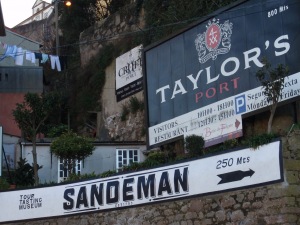 Turns out this was Timmy’s favorite bottle from the trip through Portugal and there had been “several” tastings during his visit to the lodges in Vila Nova de Gaia. I lost my tasting notes in the storm of October 2011 but Taylor Fladgate has description enough to satisfy those jonesing for the notes:
Turns out this was Timmy’s favorite bottle from the trip through Portugal and there had been “several” tastings during his visit to the lodges in Vila Nova de Gaia. I lost my tasting notes in the storm of October 2011 but Taylor Fladgate has description enough to satisfy those jonesing for the notes:
“Deep brick colour with amber rim. Rich and elegant nose combining aromas of ripe berry fruit with a delicate nuttiness and subtle mellow notes of chocolate, butterscotch and fine oak wood. Smooth and silky on the palate and full of ripe figgy, jammy flavours which persist on the long finish.”
Detail Up!
Taylor Fladgate 10 Year-old Tawny
Google Randoms:
* Robert Parker, biggie in the wine review world, calls Taylor’s tawny ports “the best of their type” and “a personal favorite.” Hermano Timmy, biggie in life, agrees.
* South Africa grows Tinta Barroca in and around the Western Cape, and makes the grape into both fortified and everyday drinking wines.
* Tinta Barroca is the name of a Portuguese/Brazilian/Norwegian band centered around a flutist, which takes its name from the famous Port wine grape.
